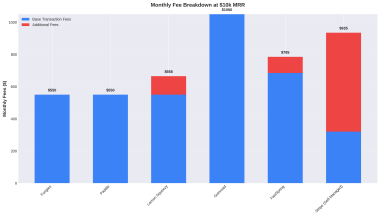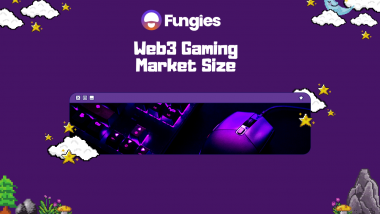In the ever-evolving world of indie game development, the path to success is both thrilling and challenging. As indie game publishers, you’re not just creators of immersive digital worlds; you’re also entrepreneurs navigating a competitive industry. To thrive in this dynamic landscape, you must continually adapt and explore new horizons.
This article serves as your guiding light through the labyrinth of opportunities, helping you embark on a journey towards growth and sustainability. We will delve into three critical pillars of indie game publishing in the digital age: diversifying your sales channels through your own web stores, the burgeoning trend of self-publishing, and strategies to avoid the notorious 30% commission that looms over the Steam platform, all while keeping control of your buyer’s data.
Let’s get right into it!
Diversifying Sales Through Your Own Web Stores
In an era where digital storefronts dominate the gaming landscape, establishing your web store can be a game-changer. The power of direct sales lies in your ability to maintain control over your brand, pricing, and customer relationships. By bypassing third-party platforms and their commissions, you maximize your revenue and gain valuable insights into your customer base.
Building a User-Friendly Web Store
Creating an effective web store requires a user-friendly interface and an appealing design. It should be easy for visitors to navigate, browse your game catalog, and make purchases. Implement secure payment gateways and ensure the shopping experience is as seamless as possible. Mobile optimization is key since an increasing number of gamers shop and browse on their smartphones and tablets.
Marketing and Promotion Strategies
To drive traffic to your web store, a well-thought-out marketing strategy is essential. Utilize social media, email marketing, content marketing, and search engine optimization to reach potential customers. Consider creating exclusive deals or promotions to incentivize visitors to make a purchase directly from your site. Building a community around your brand and games through forums and social media can also foster customer loyalty and engagement.
Managing Customer Relationships
Direct sales offer the unique opportunity to build a personal connection with your customers. Provide excellent customer support, respond to inquiries promptly, and address concerns professionally. Collect and utilize customer feedback to improve your games and services. Encourage user reviews and ratings on your site to enhance trust and credibility.
Analyzing Sales Data for Growth
One of the most valuable aspects of managing your web store is the wealth of data at your disposal. Analyze sales data to gain insights into customer behavior, preferences, and purchasing patterns. Utilize analytics tools to track which games are performing well and identify areas for improvement. This data-driven approach can help you refine your game development and marketing strategies for better results.
Diversifying your sales channels through your own web store allows you to gain a competitive edge in the indie game publishing industry. The ability to connect directly with your audience, tailor your marketing efforts, and control your sales data can significantly impact your success.
The Rise of Self-Publishing Trends
Self-publishing in the gaming industry is no longer a niche endeavor; it’s a growing trend that’s reshaping the landscape. Indie game publishers are embracing self-publishing to gain more control over their creative vision and financial outcomes. By taking on responsibilities that were once handled by traditional publishers, developers can reach their audience directly and retain a larger share of the revenue.
Benefits and Challenges of Self-Publishing
Self-publishing offers several advantages, including creative control, higher revenue share, and faster release timelines. Without the need to court traditional publishers, developers can focus on producing high-quality games that resonate with their target audience. However, self-publishing also comes with its own set of challenges, such as marketing, distribution, and the need for a robust online presence. It’s a path that requires a blend of creativity, business acumen, and dedication.
Creating a Brand and Identity
Building a brand and identity is a key component of successful self-publishing. Gamers are drawn to unique, authentic experiences. A strong brand can help you stand out in a crowded market and foster trust with your audience. Carefully consider your studio’s mission and the values you want to communicate through your games. A distinct identity can become a powerful marketing tool.
Distribution Strategies Beyond Traditional Platforms
Self-publishing allows for greater flexibility in distribution. While traditional platforms like Steam, Epic Games Store, and console marketplaces remain viable options, consider exploring alternative distribution channels. Crowdfunding, game marketplaces, and partnerships with other developers or influencers can expand your reach and introduce your games to new audiences.
Case Studies in Self-Publishing Success
Highlighting successful self-publishing case studies can provide valuable insights. Stories of indie developers who achieved great success through self-publishing can inspire and guide others in the indie game publishing world. Whether it’s the story of a small studio that gained recognition through a unique marketing campaign or an individual developer who turned a passion project into a best-seller, real-world examples offer valuable lessons for those considering the self-publishing route.
Self-publishing is a powerful avenue for indie game publishers to realize their creative vision and financial goals. It’s a trend that’s redefining the industry, offering opportunities for those willing to embrace the challenges and seize the rewards.
Avoiding the 30% Steam Commission and Managing Buyer’s Data
Steam, one of the largest digital distribution platforms for games, has long been a go-to choice for indie game publishers. However, it’s not without its challenges, especially when it comes to the 30% commission that Steam takes from game sales. This can significantly impact a developer’s bottom line, especially for smaller studios. As a result, many publishers are exploring ways to mitigate or eliminate this commission.
You can see from this chart from VG Insights that the steam market has been growing a lot. This means that more publishers are putting their games on steam as they want the best exposure. But this also results in them paying Steam the 30% commission. So, in order to avoid all of this it is necessary to have your own web store and grow it.
Exploring Alternative Distribution Channels
One approach to avoiding the 30% Steam commission is to explore alternative distribution channels. This might involve launching games on other platforms or using specialized game marketplaces. Each platform may have its own fee structure, so it’s essential to conduct research and evaluate which options are most cost-effective while reaching your target audience effectively.
Setting Up Your Own Customizable Web Shop
Setting up your own branded and customizable web shop for games is a powerful solution for bypassing third-party platforms and their associated fees. With the right infrastructure and e-commerce tools, you can create a fully customized shopping experience for your customers. This approach not only allows you to avoid commissions but also gives you control over pricing, promotions, and customer data.
Secure Transactions and Data Protection
Managing your own web shop comes with responsibilities, including ensuring secure transactions and protecting customer data. Invest in robust security measures to protect sensitive information, such as credit card details, and regularly update your systems to safeguard against data breaches. Building trust with your customers by providing a safe shopping environment is crucial for long-term success.
Leveraging Customer Data for Growth
One of the most significant advantages of managing your own web shop is the ownership of customer data. Collecting and analyzing this data can help you tailor your marketing efforts, create personalized offers, and understand your audience’s preferences better. Utilizing customer data is a powerful tool for long-term growth and customer retention.
Indie game publishers face the challenge of managing commissions from platforms like Steam, and they are actively seeking solutions. Through alternative distribution channels and setting up their own web shops, they can take control of their sales, reduce expenses, and access valuable customer data.
Monetization Strategies for Web Stores
Pricing your games effectively is a critical aspect of maximizing revenue while maintaining a loyal player base. These are the key pricing strategies for success:
- Competitive Pricing
Research your competitors’ pricing for similar games. While undercutting can attract buyers, pricing too low might devalue your game. Striking a balance between competitive and reasonable pricing is crucial.
- Tiered Pricing
Consider offering multiple editions of your game, such as standard, deluxe, and collector’s editions, each with different price points. This appeals to different customer segments and provides opportunities for upselling.
- Early Access and Pre-Order Discounts
Offering discounts to players who pre-order or participate in early access can boost initial sales. This strategy rewards loyal fans and generates buzz before the official release.
- Dynamic Pricing
Utilize dynamic pricing models that adjust based on factors like demand, time, and player behavior. This strategy can help maximize revenue by offering discounts during off-peak times and increasing prices during high demand.
- Freemium and Free Trials
Experiment with offering a free version of your game with limited content (freemium) or time-limited free trials. This can entice players to try your game and then convert to paying customers.
- Bundling
Bundle games together for a reduced price. This encourages players to purchase more titles at once and can be an effective cross-promotion strategy.
- Loyalty Discounts
Reward loyal customers with discounts on future purchases. This can encourage repeat business and build a dedicated customer base.
- Psychological Pricing
Utilize psychological pricing techniques, such as ending prices with .99 or presenting prices in a way that emphasizes value, to influence buyer decisions.
- Regional Pricing
Adjust pricing based on the economic conditions of different regions. This helps make your games more accessible and can reduce the impact of currency fluctuations.
DLCs, Expansions, and Microtransactions
These things provide additional revenue streams for your games. Here’s how to utilize these monetization methods effectively:
- Downloadable Content
Create and offer DLCs that add substantial content to your game, such as new levels, characters, or story arcs. Ensure that these additions enhance the overall gaming experience and aren’t seen as essential to enjoy the base game.
- Expansions
Expansions are larger than typical DLCs and can provide a significant extension of the game. When marketing expansions, emphasize the value and new experiences they offer.
- Microtransactions
Microtransactions are small in-game purchases that enhance the player experience but aren’t required to enjoy the game. Implement them carefully to avoid a pay-to-win perception. Cosmetic items and convenience enhancements are popular choices for microtransactions.
- Season Passes
Offer season passes that grant access to a series of DLCs or expansions at a discounted price compared to purchasing them individually. This can encourage players to commit to the long-term enjoyment of your game.
- Transparency
Be transparent about what players receive with their purchase and any future content plans. Clear communication helps build trust and confidence in your monetization strategies.
- Player Choice
Allow players to choose the content they want to purchase, avoiding forcing them to buy content they aren’t interested in. This enhances the sense of player agency.
Subscriptions and Season Passes
Subscriptions and season passes are monetization models that can offer a steady stream of revenue for indie game publishers. This is how you should approach them:
- Subscription Models
Consider offering subscription services that provide access to a library of your games or exclusive content. Subscriptions can create a reliable source of income and encourage player loyalty.
- Season Passes
Season passes provide players with access to a set of planned content or expansions over time. Marketing season passes alongside the base game can increase their adoption.
- Regular Updates
To justify the subscription or season pass model, provide regular updates, content drops, or early access to new features. Consistent value delivery is key to retaining subscribers.
- Exclusive Perks
Offer exclusive perks to subscribers, such as in-game items, discounts, or access to beta versions of upcoming games. These perks enhance the perceived value of the subscription or season pass.
- Clear Value Proposition
Clearly communicate the value of the subscription or season pass, outlining the benefits players will receive over time. Make sure the value exceeds the cost.
- Player Feedback
Be open to player feedback and adapt your subscription or season pass offerings based on their preferences and suggestions.
Limited-Time Sales and Bundles
Creating a sense of urgency and offering value through limited-time sales and bundled deals can significantly impact your web store’s revenue:
- Flash Sales
Periodically offer time-limited discounts, creating urgency for players to make a purchase. Promote these sales effectively through your marketing channels.
- Holiday and Event Sales
Leverage holidays and special events to offer thematic sales and bundles. Players are often more receptive to buying during these times.
- Bundle Deals
Combine multiple games or DLCs into bundles at a discounted price. This not only encourages players to purchase more titles but also introduces them to other games in your catalog.
- Cross-Promotions
Partner with other indie developers for cross-promotional bundle deals. This can expand your customer base and introduce your games to new audiences.
- Loyalty Rewards
Offer exclusive discounts and bundles to loyal customers who have purchased from your store before. This rewards and retains your most dedicated players.
Final Words
In the ever-evolving landscape of indie game publishing, success requires adaptability and innovation. By diversifying sales, embracing self-publishing, and exploring monetization strategies while protecting player data and privacy, indie game publishers can thrive in a competitive industry.
These strategies empower developers to create, monetize, and engage with their audiences on their terms. As the industry continues to evolve, those who stay nimble and player-focused will remain at the forefront of the dynamic gaming world.






